Knee
Is your knee not as flexible as it used to be? Are you recovering from knee surgery? Did you recently have a knee replacement? The Dynasplint® System is designed to help patients like you recover from knee injuries, surgeries and trauma. Our innovative Knee Dynasplint System accelerates the recovery process as part of your home exercise program. The Knee Dynasplint System provides a gentle stretch to increase range of motion in adult, pediatric and infant patients.
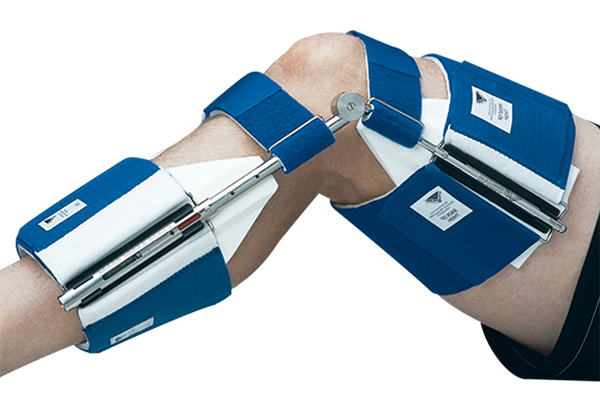
Knee Dynasplint® System
We designed the Dynasplint® System to increase your range of motion and accelerate your recovery period after surgery, injury or trauma.
Patients who use the Dynasplint System at home, alongside their prescribed home exercise program, experience more consistent progress and are more likely to have a successful rehabilitation experience.
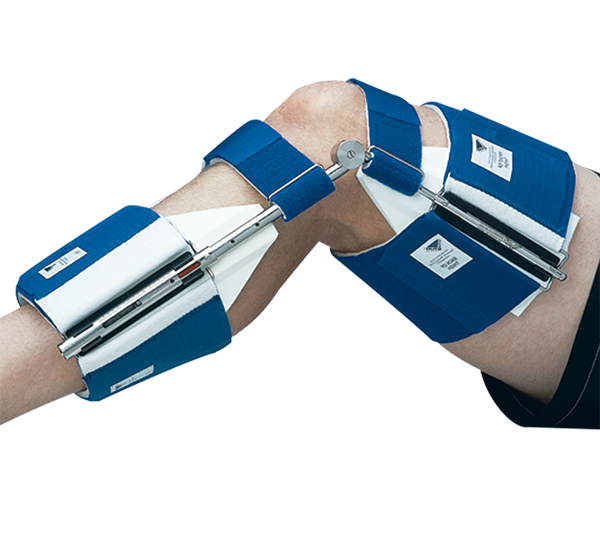
Dynasplint® System
Range of Motion: 65° flexion to 25° hyperextension
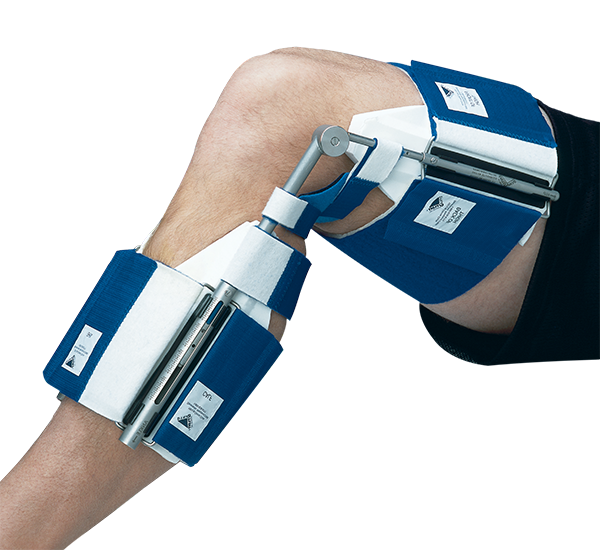
Dynasplint® System
Range of Motion: 50° flexion to 140° flexion
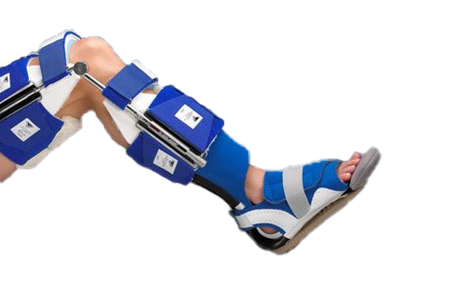
Dynasplint® System
Range of Motion: 130° flexion to 40° flexion
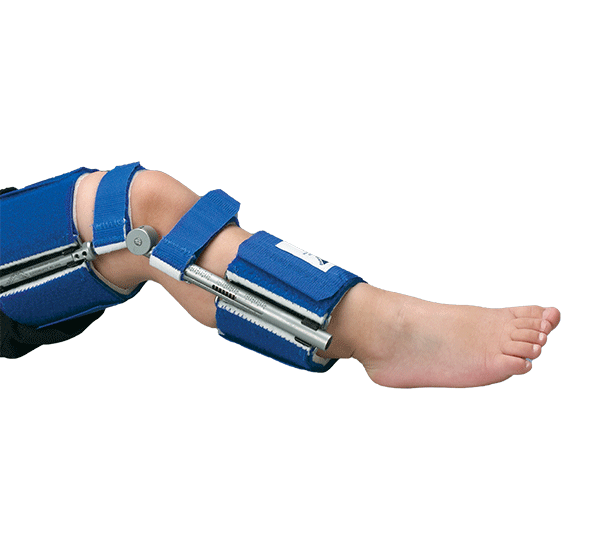
Dynasplint® System
Range of Motion: 65° flexion to 25° hyperextension
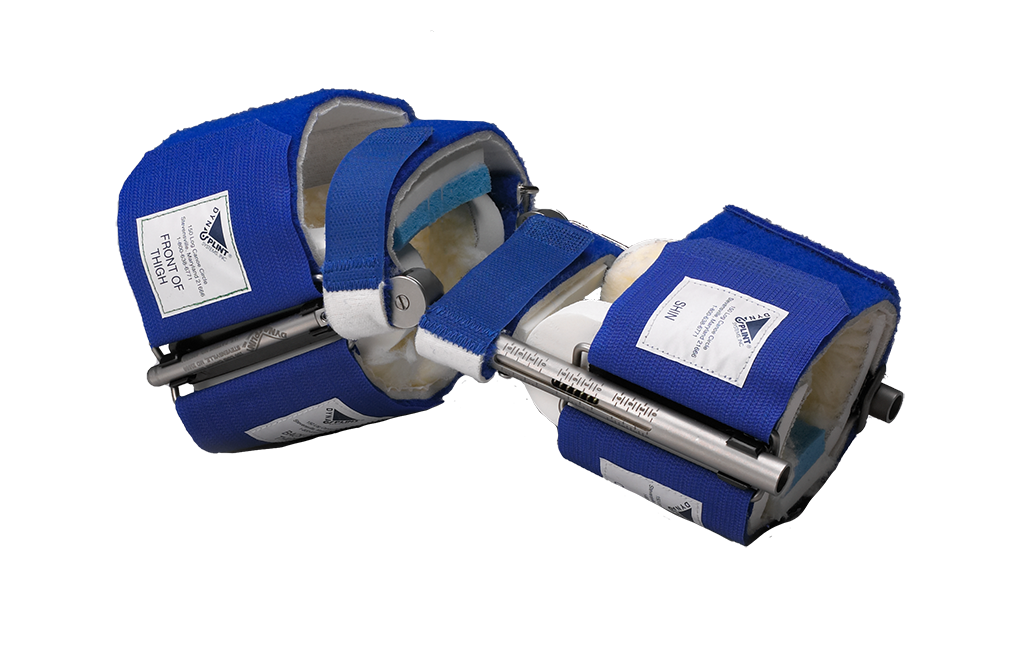
Knee Extension
Dynasplint® System
Range of Motion: 65° flexion to 25° hyperextension
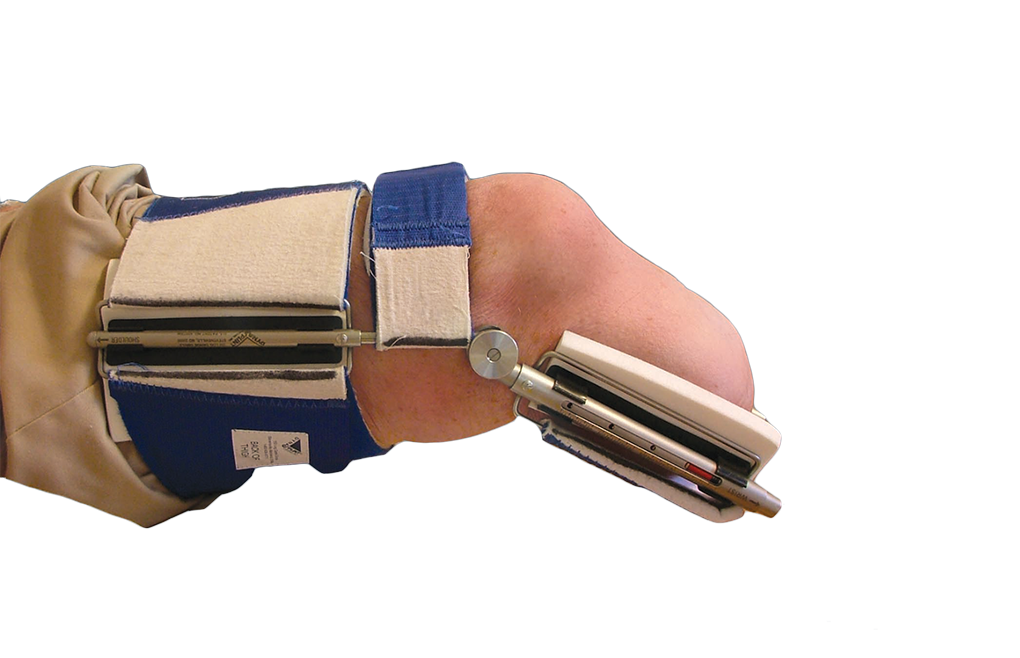
Amputee Extension
Dynasplint® System
Range of Motion: 65° flexion to 25° hyperextension
Ready to Get Started?
Dynasplint® Systems are for patients who want to recover their lost range of motion in a shorter amount of time. The simple and adjustable design makes it easy to adhere to a home exercise program. The Knee Dynasplint System is for the adult, pediatric and infant patient and can be either rented or purchased. It is comfortable to use, biomechanically correct and can be adjusted to each user to ensure maximum comfort and exceptional results. A caring member of the Dynasplint team follows up with each patient to check in on the progress, answer any questions and make necessary fitting adjustments so that goals are met.
Our innovative dynamic splinting system mimics a physical therapist’s hands using gentle tension. Every time you use your Dynasplint System, you will be replicating that tension giving you a low-load, prolonged-duration stretch (LLPS). Using the Dynasplint System, you will receive the best home passive range of motion program available.
A clinical study found a 53% average reduction in rehabilitation time and cost with the use of the Dynasplint System alongside physical therapy. More than one million patients have already benefited from using our systems—join them today!
Prescribing Dynasplint® as soon as the patient is ready for gentle stretching achieves the best results. Early application allows patients to accelerate the benefits of Dynasplint as part of a complete home exercise program.
If you are considering surgery, speak to your physician or therapist about obtaining a Dynasplint System proactively so we can help you maximize your results during the early phase of healing and alongside your post-operative home exercise program.
Total Knee Replacements
Tibial Plateau Fractures
Tendon and Ligament Repairs (ACL, PCL)
Open Reduction Internal Fixation (ORIF)
Burns
Meniscectomy
Tendon Releases
Head Trauma and Spinal Cord Injuries
Cerebral Palsy (CP)
Cerebral Vascular Accident (CVA)
Distal Limb Removal
Other Orthopedic and Neurological Conditions
Talk to your doctor to find out if Dynasplint® is right for you.
Furia J, Willis B, Curran S, and Shanmugam R “Meta-analysis in Contracture Reduction of the Lower Extremity” Presented at American College of Sports Medicine, Annual Conference 2013.
Armstrong MD Dennis L, Willis PhD FB “Contracture Reduction Following Total Knee Arthroplasty, a Cohort Series” Presented in Pain Week 2010.
Willis FB “Dancers Restore Knee Flexion Through Dynamic Splinting”Biomechanics.2008 Jan;15(1):49-54
Usaba M, Akai M, Shirasaki Y, Miyakawa S “Experimental Joint Contracture Correction with Low-Torque, Long-Duration Repeated Stretching” Clinical Orthopedics and Related Research. 2007 March; 456:70-78
Harvey L, Herbert R, Crosbie J “Does Stretching Induce Lasting Increases in Joint ROM? A Systematic Review” Physiotherapy Research International. 2002; 7(1):1-13
Nuismer B, Ekes A, Holm M “The Use of Low-Load Prolonged Stretch Devices in Rehabilitation Programs in the Pacific Northwest” American Journal of Occupational Therapy. 1997 Jul-Aug; 51(7):2.5-43
Hepburn G “Case Studies: Contracture and Stiff Joint Management with Dynasplint” The Journal of Orthopedic and Sports Physical Therapy. 1987 April; 8(10):498-503
Caniglia A, Carlson L, Cole M, Hepburn GR, Kublin A “Multi-Center Clinical Investigation on the Effect of Incorporating Dynasplint® Treatment into Standard Physical Therapy Practice for Restoring Range of Motion of Elbows and Knees” Presented at the NY APTA State Chapter Meeting
Dynasplint® Systems are for patients who want to recover their lost range of motion in a shorter amount of time. The simple and adjustable design makes it easy to adhere to a home exercise program. The Knee Dynasplint System is for the adult, pediatric and infant patient and can be either rented or purchased. It is comfortable to use, biomechanically correct and can be adjusted to each user to ensure maximum comfort and exceptional results. A caring member of the Dynasplint team follows up with each patient to check in on the progress, answer any questions and make necessary fitting adjustments so that goals are met.
Our innovative dynamic splinting system mimics a physical therapist’s hands using gentle tension. Every time you use your Dynasplint System, you will be replicating that tension giving you a low-load, prolonged-duration stretch (LLPS). Using the Dynasplint System, you will receive the best home passive range of motion program available.
A clinical study found a 53% average reduction in rehabilitation time and cost with the use of the Dynasplint System alongside physical therapy. More than one million patients have already benefited from using our systems—join them today!
Prescribing Dynasplint® as soon as the patient is ready for gentle stretching achieves the best results. Early application allows patients to accelerate the benefits of Dynasplint as part of a complete home exercise program.
If you are considering surgery, speak to your physician or therapist about obtaining a Dynasplint System proactively so we can help you maximize your results during the early phase of healing and alongside your post-operative home exercise program.
Total Knee Replacements
Tibial Plateau Fractures
Tendon and Ligament Repairs (ACL, PCL)
Open Reduction Internal Fixation (ORIF)
Burns
Meniscectomy
Tendon Releases
Head Trauma and Spinal Cord Injuries
Cerebral Palsy (CP)
Cerebral Vascular Accident (CVA)
Distal Limb Removal
Other Orthopedic and Neurological Conditions
Talk to your doctor to find out if Dynasplint® is right for you.
Furia J, Willis B, Curran S, and Shanmugam R “Meta-analysis in Contracture Reduction of the Lower Extremity” Presented at American College of Sports Medicine, Annual Conference 2013.
Armstrong MD Dennis L, Willis PhD FB “Contracture Reduction Following Total Knee Arthroplasty, a Cohort Series” Presented in Pain Week 2010.
Willis FB “Dancers Restore Knee Flexion Through Dynamic Splinting”Biomechanics.2008 Jan;15(1):49-54
Usaba M, Akai M, Shirasaki Y, Miyakawa S “Experimental Joint Contracture Correction with Low-Torque, Long-Duration Repeated Stretching” Clinical Orthopedics and Related Research. 2007 March; 456:70-78
Harvey L, Herbert R, Crosbie J “Does Stretching Induce Lasting Increases in Joint ROM? A Systematic Review” Physiotherapy Research International. 2002; 7(1):1-13
Nuismer B, Ekes A, Holm M “The Use of Low-Load Prolonged Stretch Devices in Rehabilitation Programs in the Pacific Northwest” American Journal of Occupational Therapy. 1997 Jul-Aug; 51(7):2.5-43
Hepburn G “Case Studies: Contracture and Stiff Joint Management with Dynasplint” The Journal of Orthopedic and Sports Physical Therapy. 1987 April; 8(10):498-503
Caniglia A, Carlson L, Cole M, Hepburn GR, Kublin A “Multi-Center Clinical Investigation on the Effect of Incorporating Dynasplint® Treatment into Standard Physical Therapy Practice for Restoring Range of Motion of Elbows and Knees” Presented at the NY APTA State Chapter Meeting
